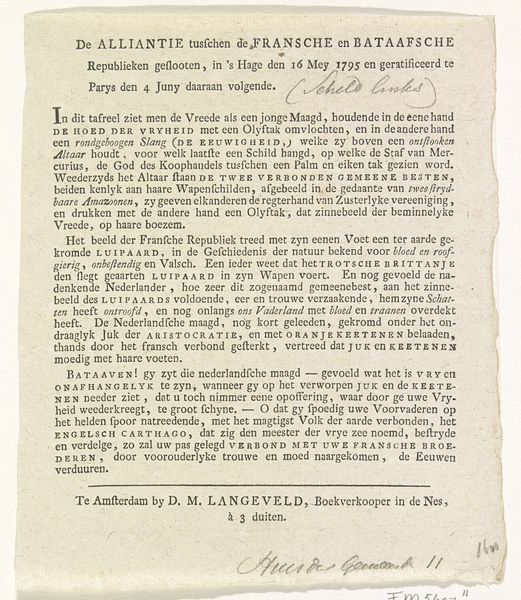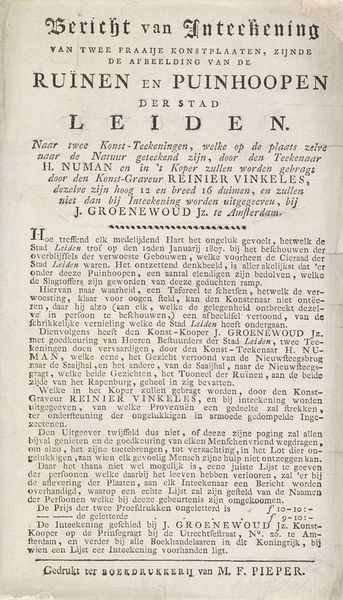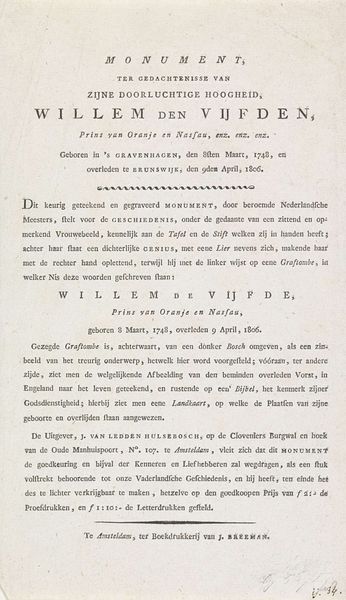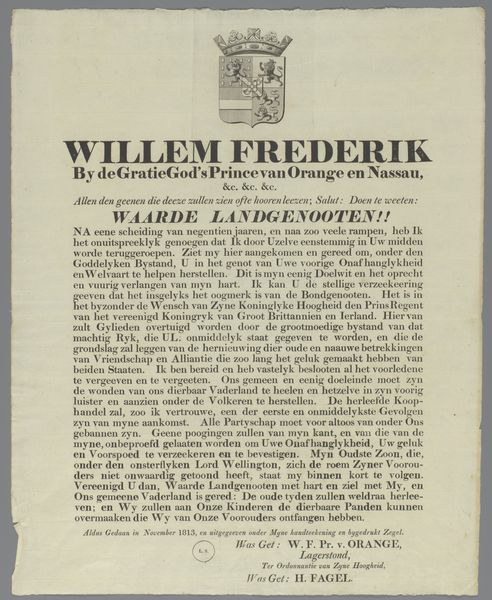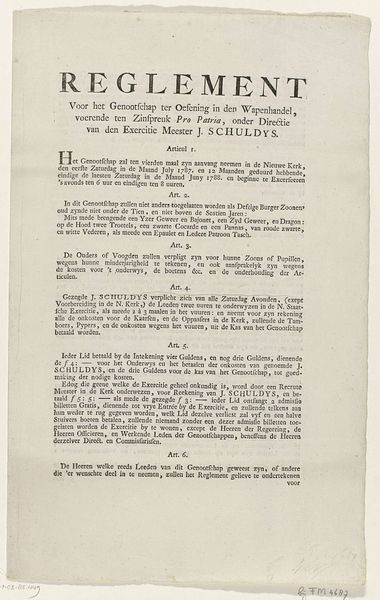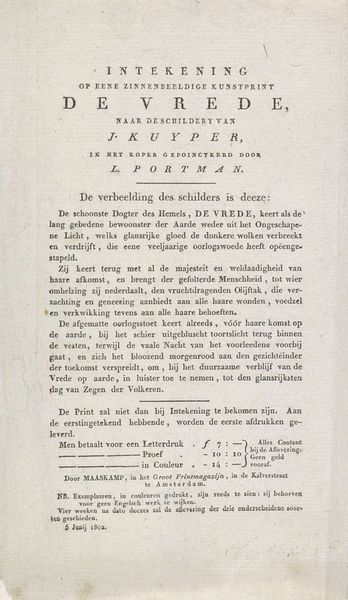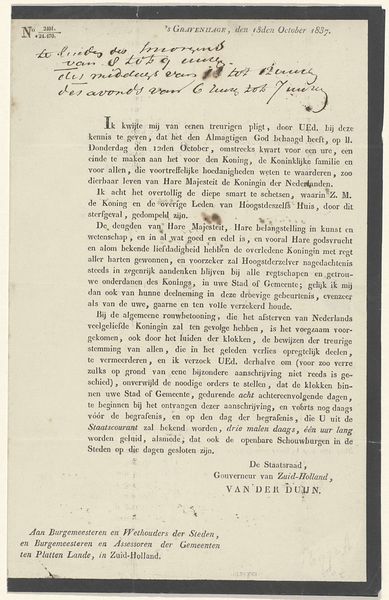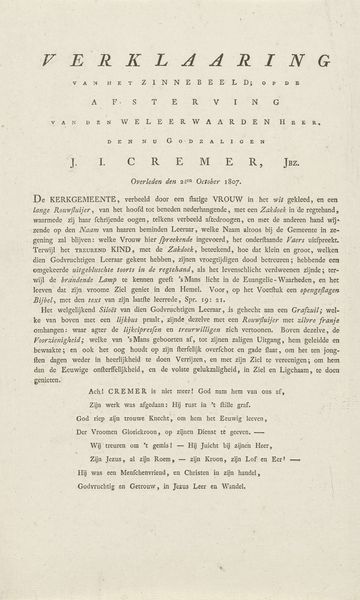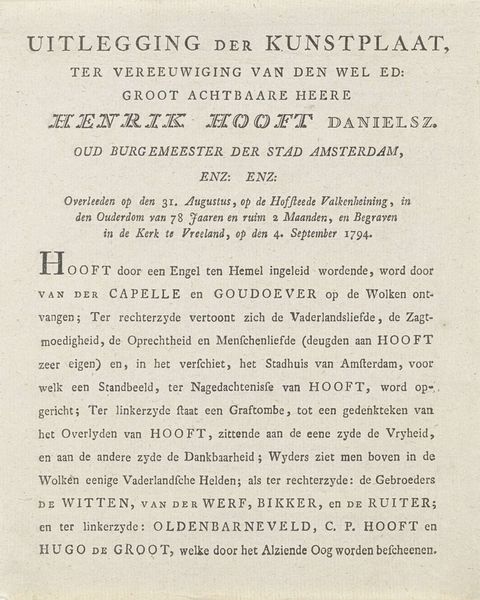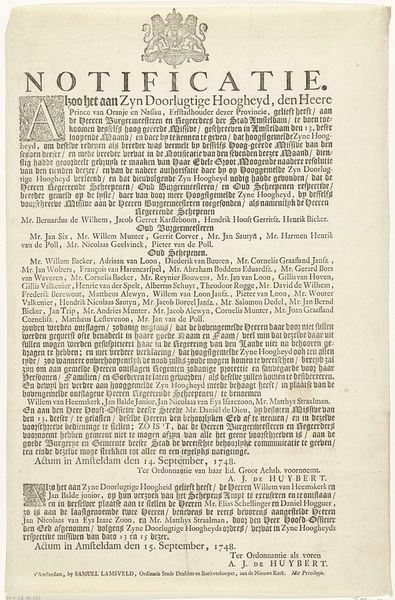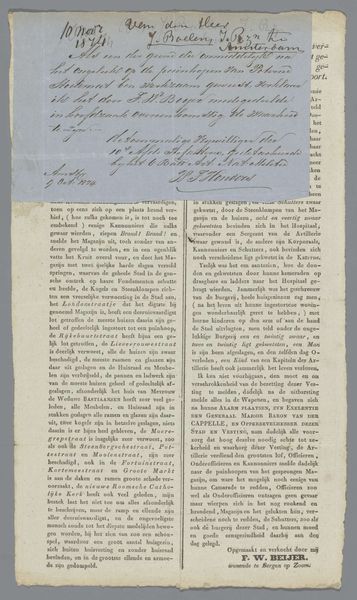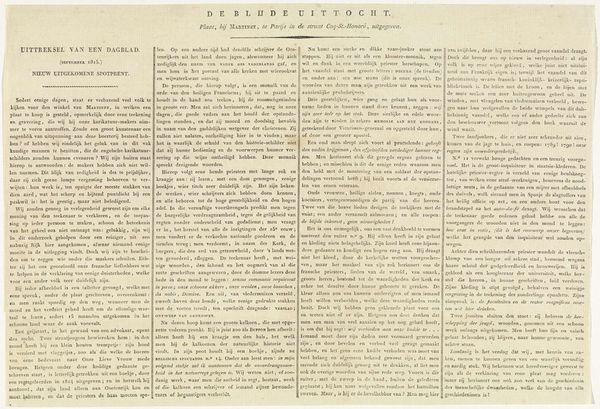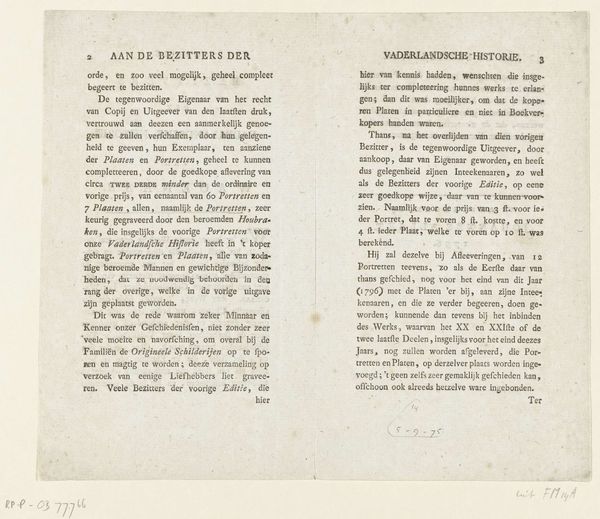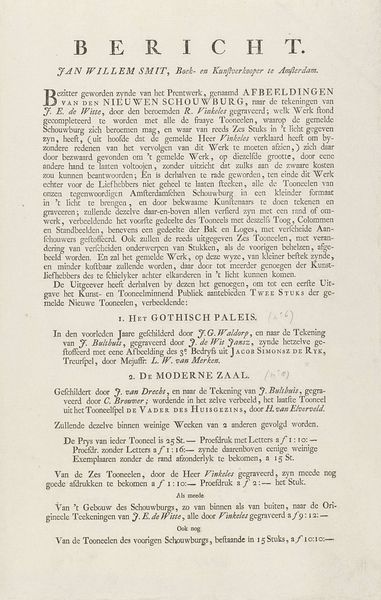
print, typography, poster
# print
#
text
#
typography
#
poster
Dimensions: height 460 mm, width 357 mm
Copyright: Rijks Museum: Open Domain
Editor: So, this poster, "Proclamation of the Prince of Orange upon Arrival in Scheveningen," is from 1813. It looks like a printed broadside. There’s a striking sense of formality about it, all that dense text, like a legal document made public. How should we consider its social impact as an object in that time period? Curator: Well, think about the material conditions of its production. Print was still relatively expensive, making this a deliberate act of disseminating a particular message to those who could access it. The typography itself is key. Note how the large, bold font emphasizes Willem Frederik’s name and the appeal to "Waarde Landgenooten!" — valued countrymen. The scale suggests this was meant for public display, almost a performance in material form. What does the physical presence of this proclamation tell us about the Prince's strategies for legitimizing his rule? Editor: I see your point. So it’s not just the words, but the conscious *making* and distribution that held meaning? Was there a sense of "high" art versus this kind of populist form, like craft versus fine art? Curator: Exactly! It challenges those boundaries. Consider this less as "art" in the traditional sense and more as a piece of carefully engineered political messaging produced for mass consumption. The material, the printing, the distribution – they all worked together. The labour involved – from typesetting to physical placement – it was a manufactured, constructed moment. Was it aimed at a specific group, or everyone? Editor: Well, it seems primarily aimed at literate citizens, so perhaps the wealthier merchant classes whose livelihood and connections would serve William best... Curator: Precisely! The text itself talks about restoring commerce, speaking directly to their material concerns. And who benefitted from that restoration? It really pushes us to understand not just *what* it says, but *how* it operates within the web of social and economic relationships. Editor: That's really fascinating; it's more about who could read it and the means of getting the Proclamation to them than any fine-art context we're trained to find. Thanks! Curator: Indeed, and in considering the historical material production we find what may be intentionally obscured within its proclamatory text. Thank you for bringing these questions to the work today!
Comments
No comments
Be the first to comment and join the conversation on the ultimate creative platform.
